Abstract
OBJECTIVES. The purpose of this study was to document changes in mammography use between 1987 and 1990 and assess the relationship of use to selected economic, need, and health system factors. METHODS. Independent random-digit-dialed telephone surveys of women between 52 and 75 years of age were conducted. RESULTS. Between 1987 and 1990, the proportion of women who had had a mammogram in the past year increased from 31% to 51%. Though income was significantly related to overall patterns of use, it was not associated with recent mammogram use in 1990. Women with a family history of breast cancer reported greater use at both times, as did women who reported having a regular physician (particularly a gynecologist or internist). When all other variables were controlled for, women were over nine times more likely to have had multiple and recent mammograms in 1990 than in 1987. CONCLUSIONS. Mammography use dramatically increased between 1987 and 1990. There were strong relationships between the type of regular physician and mammography screening and between economic and personal history and repeated and recent mammography use.
Full text
PDF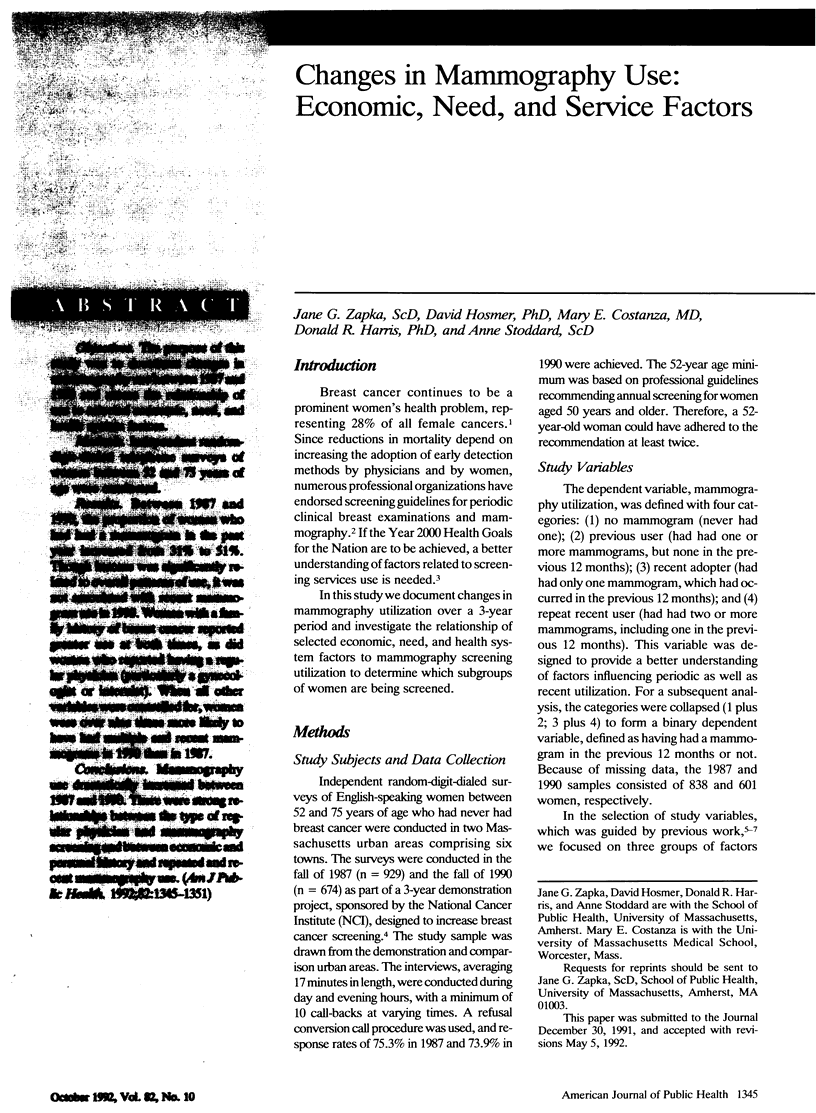
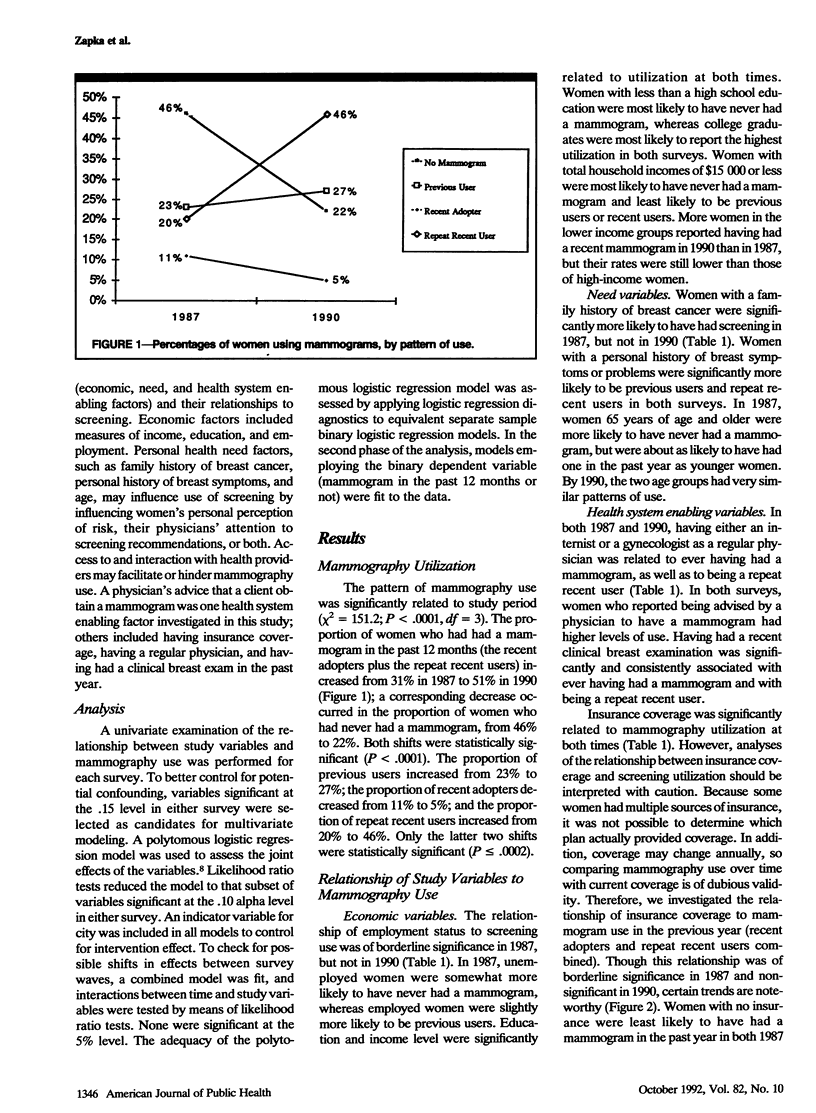
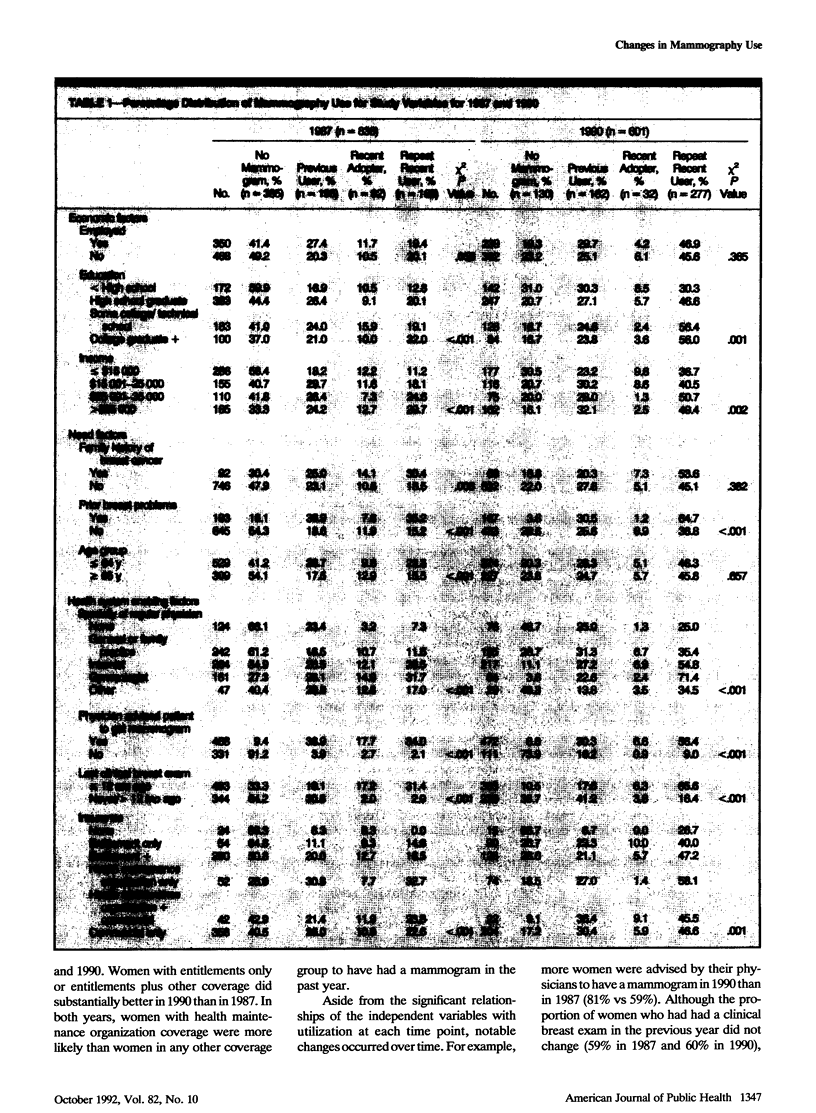
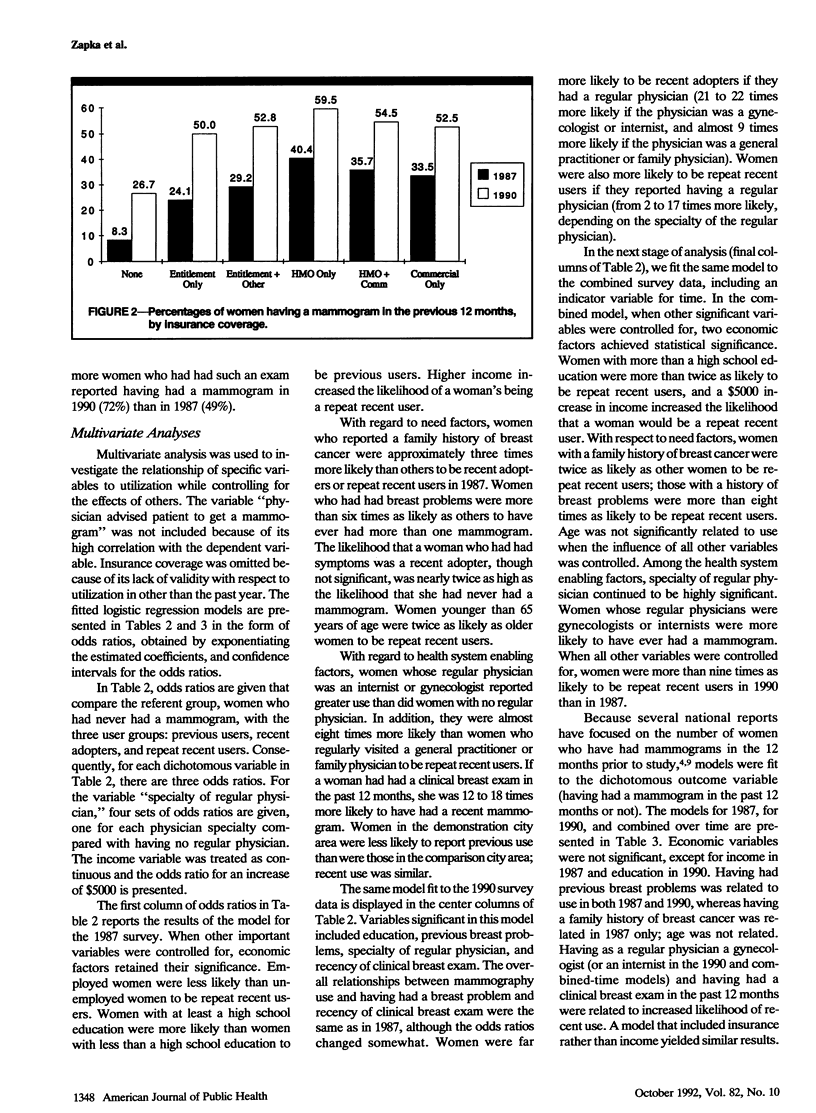
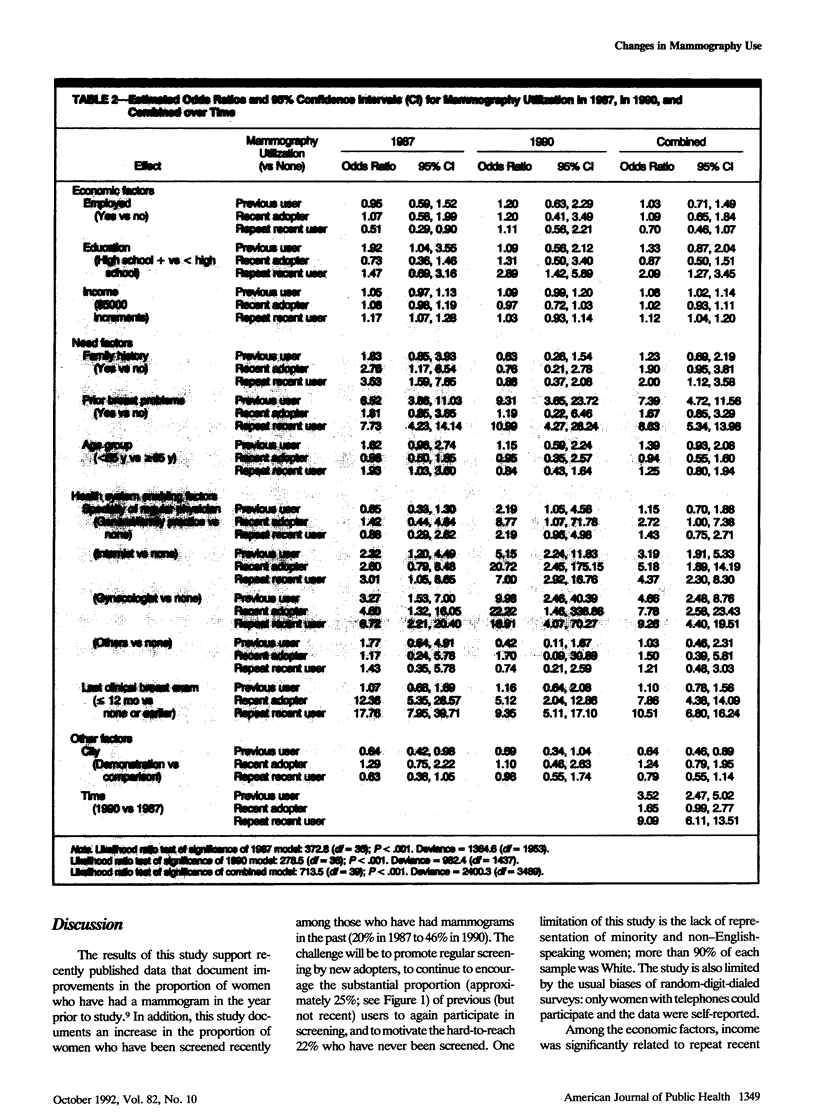
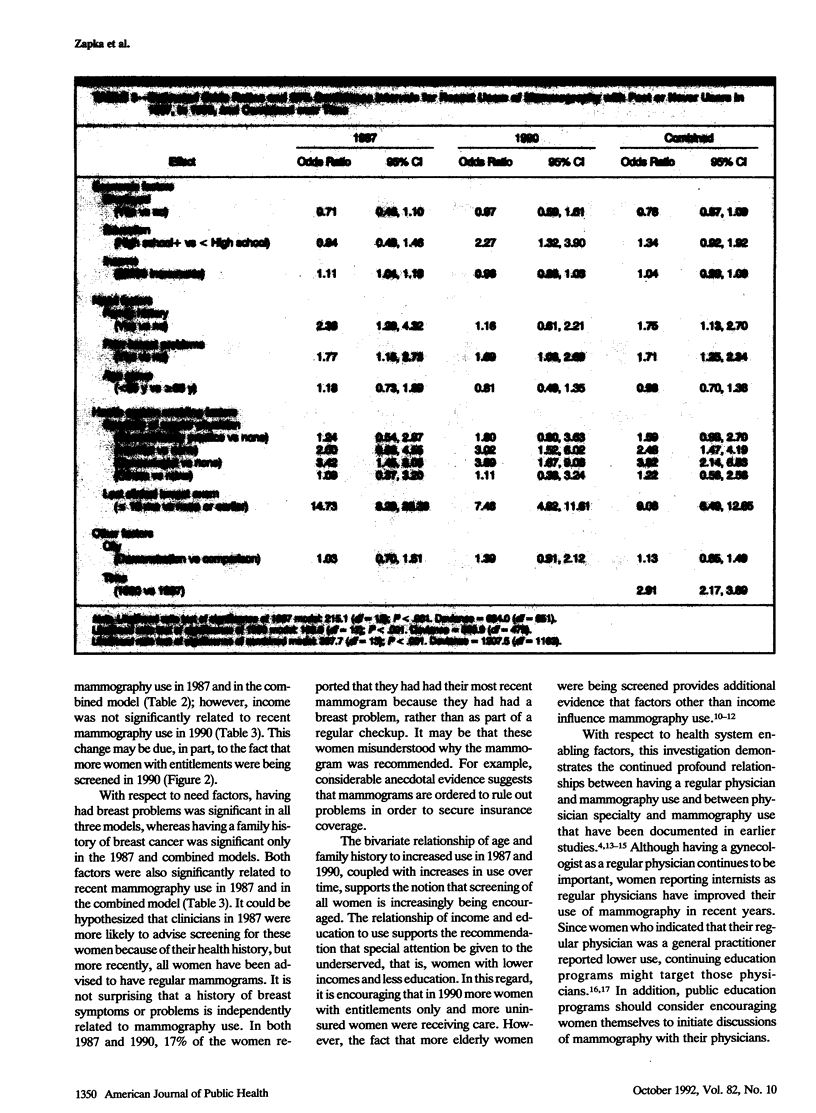
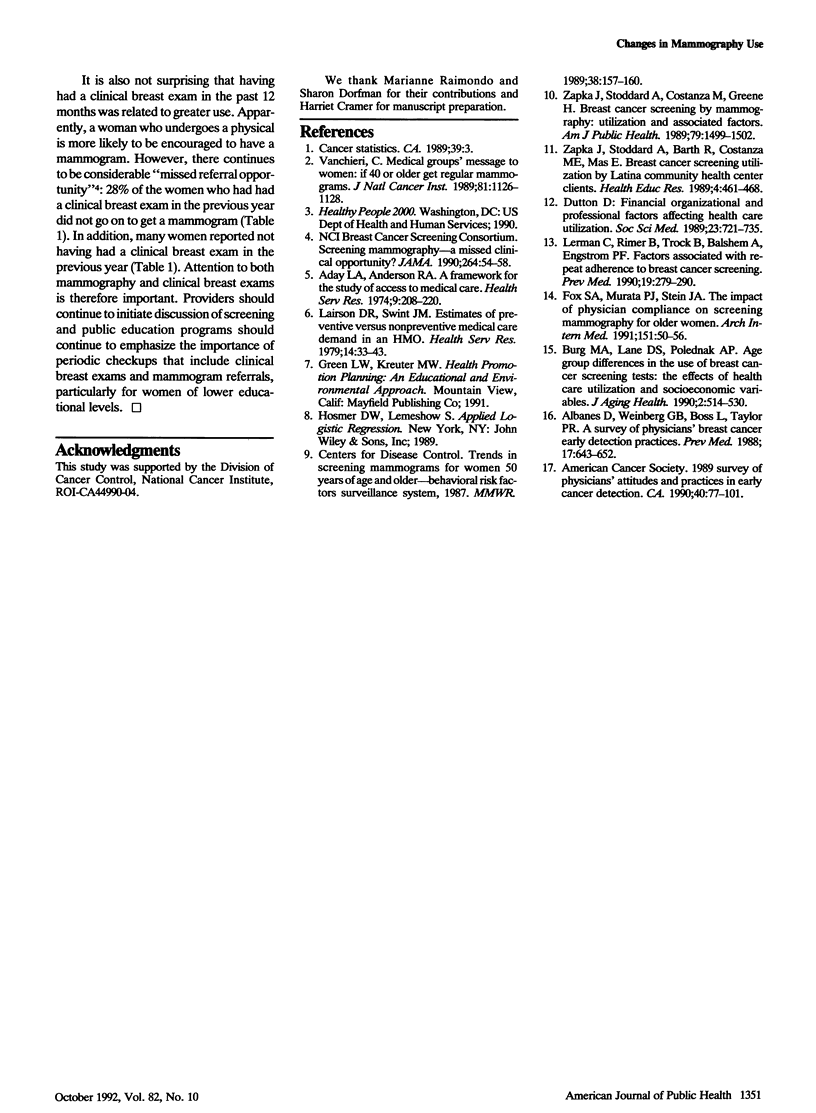
Selected References
These references are in PubMed. This may not be the complete list of references from this article.
- Aday L. A., Andersen R. A framework for the study of access to medical care. Health Serv Res. 1974 Fall;9(3):208–220. [PMC free article] [PubMed] [Google Scholar]
- Albanes D., Weinberg G. B., Boss L., Taylor P. R. A survey of physicians' breast cancer early detection practices. Prev Med. 1988 Sep;17(5):643–652. doi: 10.1016/0091-7435(88)90057-6. [DOI] [PubMed] [Google Scholar]
- Burg M. A., Lane D. S., Polednak A. P. Age group differences in the use of breast cancer screening tests. The effects of health care utilization and socioeconomic variables. J Aging Health. 1990 Nov;2(4):514–530. doi: 10.1177/089826439000200406. [DOI] [PubMed] [Google Scholar]
- Dutton D. Financial, organizational and professional factors affecting health care utilization. Soc Sci Med. 1986;23(7):721–735. doi: 10.1016/0277-9536(86)90121-8. [DOI] [PubMed] [Google Scholar]
- Fox S. A., Murata P. J., Stein J. A. The impact of physician compliance on screening mammography for older women. Arch Intern Med. 1991 Jan;151(1):50–56. [PubMed] [Google Scholar]
- Lairson D. R., Swint J. M. Estimates of preventive versus nonpreventive medical care demand in an HMO. Health Serv Res. 1979 Spring;14(1):33–43. [PMC free article] [PubMed] [Google Scholar]
- Lerman C., Rimer B., Trock B., Balshem A., Engstrom P. F. Factors associated with repeat adherence to breast cancer screening. Prev Med. 1990 May;19(3):279–290. doi: 10.1016/0091-7435(90)90028-i. [DOI] [PubMed] [Google Scholar]
- Vanchieri C. Medical groups' message to women: if 40 or older, get regular mammograms. J Natl Cancer Inst. 1989 Aug 2;81(15):1126–1128. doi: 10.1093/jnci/81.15.1126. [DOI] [PubMed] [Google Scholar]
- Zapka J. G., Stoddard A. M., Costanza M. E., Greene H. L. Breast cancer screening by mammography: utilization and associated factors. Am J Public Health. 1989 Nov;79(11):1499–1502. doi: 10.2105/ajph.79.11.1499. [DOI] [PMC free article] [PubMed] [Google Scholar]


